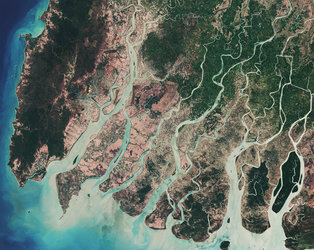Accept all cookies Accept only essential cookies See our Cookie Notice

About ESA
The European Space Agency (ESA) is Europe’s gateway to space. Its mission is to shape the development of Europe’s space capability and ensure that investment in space continues to deliver benefits to the citizens of Europe and the world.
Highlights
ESA - United space in Europe
This is ESA ESA facts Member States & Cooperating States Funding Director General Top management For Member State Delegations European vision European Space Policy ESA & EU Space Councils Responsibility & Sustainability Annual Report Calendar of meetings Corporate newsEstablishments & sites
ESA Headquarters ESA ESTEC ESA ESOC ESA ESRIN ESA EAC ESA ESAC Europe's Spaceport ESA ESEC ESA ECSAT Brussels Office Washington OfficeWorking with ESA
Business with ESA ESA Commercialisation Gateway Law at ESA Careers Cyber resilience at ESA IT at ESA Newsroom Partnerships Merchandising Licence Education Open Space Innovation Platform Integrity and Reporting Administrative Tribunal Health and SafetyMore about ESA
History ESA Historical Archives Exhibitions Publications Art & Culture ESA Merchandise Kids Diversity ESA Brand CentreLatest
Space in Member States
Find out more about space activities in our 23 Member States, and understand how ESA works together with their national agencies, institutions and organisations.
Science & Exploration
Exploring our Solar System and unlocking the secrets of the Universe
Go to topicAstronauts
Missions
Juice Euclid Webb Solar Orbiter BepiColombo Gaia ExoMars Cheops Exoplanet missions More missionsActivities
International Space Station Orion service module Gateway Concordia Caves & Pangaea BenefitsLatest
Space Safety
Protecting life and infrastructure on Earth and in orbit
Go to topicAsteroids
Asteroids and Planetary Defence Asteroid danger explained Flyeye telescope: asteroid detection Hera mission: asteroid deflection Near-Earth Object Coordination CentreSpace junk
About space debris Space debris by the numbers Space Environment Report In space refuelling, refurbishing and removingSafety from space
Clean Space ecodesign Zero Debris Technologies Space for Earth Supporting Sustainable DevelopmentLatest
Applications
Using space to benefit citizens and meet future challenges on Earth
Go to topicObserving the Earth
Observing the Earth Future EO Copernicus Meteorology Space for our climate Satellite missionsCommercialisation
ESA Commercialisation Gateway Open Space Innovation Platform Business Incubation ESA Space SolutionsLatest
Enabling & Support
Making space accessible and developing the technologies for the future
Go to topicBuilding missions
Space Engineering and Technology Test centre Laboratories Concurrent Design Facility Preparing for the future Shaping the Future Discovery and Preparation Advanced Concepts TeamSpace transportation
Space Transportation Ariane Vega Space Rider Future space transportation Boost! Europe's Spaceport Launches from Europe's Spaceport from 2012Latest
Earth from Space: Cyclone Mocha
Thank you for liking
You have already liked this page, you can only like it once!
The Copernicus Sentinel-3 mission captured this image of the powerful Cyclone Mocha on 13 May 2023 as it made its way across the Bay of Bengal heading northeast towards Bangladesh and Myanmar.
Zoom in to explore this image at its full resolution or click on the circles to learn more.
Cyclone Mocha originated in the Indian Ocean, and it gradually intensified while moving towards the Bay of Bengal. Winds topped 280 km per hour, making it one the strongest storms on record in the North Indian Ocean, similar to Cyclone Fani, which hit the same area in May 2019.
Although the storm weakened slightly as it approached Myanmar and Bangladesh, it caused widespread destruction as it made landfall on 14 May.
With thousands of people losing their houses, infrastructure seriously damaged and croplands inundated, both the International Charter Space and Major Disasters and the Copernicus Emergency Mapping Service were triggered to supply maps based on satellite data to help civil protection authorities and the international humanitarian community with their emergency response efforts.
Satellites orbiting Earth can provide indispensable up-to-date information to observe such events, as shown here from Copernicus Sentinel-3. The mission is designed to measure, monitor and understand large-scale global dynamics and provides essential information in near-real time for ocean and weather forecasting.
Acquired with the Ocean and Land Colour Instrument, this wide view covers an area of over 2000 km from north to south. The storm is estimated to be more than 1000 km across.
In the cloud-free portion on top of the image we can see parts of India, Nepal, Bangladesh and Myanmar and the entire country of Bhutan. The white snow-capped mountains of the eastern part of the Himalayas, including Mount Everest, the highest mountain on the planet, are clearly visible. The Tibetan Plateau – part of China – appear in brownish colours owing to the absence of vegetation.
-
CREDIT
contains modified Copernicus Sentinel data (2023), processed by ESA -
LICENCE
CC BY-SA 3.0 IGO or ESA Standard Licence
(content can be used under either licence)

Cyclone Fani

Cyclone Debbie

Cyclone Amphan making landfall over Bangladesh

Irrawaddy Delta, Myanmar















 Germany
Germany
 Austria
Austria
 Belgium
Belgium
 Denmark
Denmark
 Spain
Spain
 Estonia
Estonia
 Finland
Finland
 France
France
 Greece
Greece
 Hungary
Hungary
 Ireland
Ireland
 Italy
Italy
 Luxembourg
Luxembourg
 Norway
Norway
 The Netherlands
The Netherlands
 Poland
Poland
 Portugal
Portugal
 Czechia
Czechia
 Romania
Romania
 United Kingdom
United Kingdom
 Slovenia
Slovenia
 Sweden
Sweden
 Switzerland
Switzerland
























